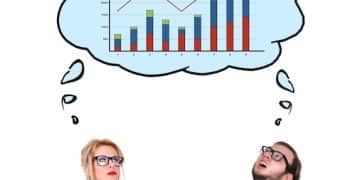Federal Student Loan Forgiveness Programs: Your 2025 Guide

Federal student loan forgiveness programs offer various avenues for borrowers to reduce or eliminate their student debt, reflecting evolving government policies and eligibility criteria that prospective applicants should thoroughly understand for 2025 to make informed decisions about their financial future.
Navigating the landscape of student loan debt can be daunting, but understanding the options available is crucial for financial well-being. This guide delves into Federal Student Loan Forgiveness Programs: Understanding Your Options in 2025, offering clarity on how these initiatives might impact your financial future.
The Evolving Landscape of Federal Student Loan Forgiveness
The concept of student loan forgiveness has been a dynamic area of federal policy, marked by significant changes and ongoing discussions. For many borrowers, the prospect of having a portion or all of their federal student loans forgiven represents a crucial pathway to financial stability. This section explores the overarching landscape as it stands and how it might evolve into 2025.
Federal student loan programs are complex, reflecting a blend of economic realities, educational policies, and political priorities. Each variant of loan forgiveness is designed to address specific needs or incentivize certain career paths, ensuring that relief is targeted where it can have the most impact. The government’s approach often balances the desire to alleviate borrower burden with the need to maintain fiscal responsibility and program sustainability.
Key Drivers Behind Forgiveness Initiatives
Several factors continually shape the federal government’s approach to student loan forgiveness. Economic conditions play a significant role; during times of economic downturns, greater emphasis may be placed on debt relief to stimulate consumer spending and reduce financial strain. Social equity concerns also drive policy, with programs often designed to support low-income borrowers or those in underserved communities.
- Economic Stimulus: Reducing debt can free up disposable income.
- Social Equity: Addressing disparities in educational attainment and debt burden.
- Workforce Incentives: Encouraging careers in public service or critical sectors.
- Administrative Efficiency: Streamlining application processes and eligibility.
Beyond these drivers, the administrative capacity of federal agencies to manage and implement these programs is also a key consideration. The Department of Education, through its various offices, continuously works to refine processes, clarify eligibility, and ensure that borrowers can access the relief they are entitled to. This ongoing refinement means that while the core programs may remain consistent, their implementation and specific requirements can shift.
Public Service Loan Forgiveness (PSLF): A Cornerstone Program in 2025
The Public Service Loan Forgiveness (PSLF) program remains one of the most significant pathways to federal student loan forgiveness for those employed in public service. Designed to encourage individuals to pursue careers in government or non-profit organizations, PSLF offers complete forgiveness of the remaining balance on Direct Loans after 120 qualifying monthly payments. Understanding its nuances is critical for current and aspiring public servants.
PSLF is not new, but its administration and the details of qualifying employment have seen adjustments over the years, making precise adherence to its rules paramount. The definition of a “qualifying employer” is broad, encompassing most government organizations at federal, state, local, or tribal levels, as well as many non-profit organizations that are tax-exempt under Section 501(c)(3) of the Internal Revenue Code. It’s important for borrowers to verify their employer’s status.
Eligibility Criteria for PSLF
To be eligible for PSLF, borrowers must meet specific criteria that cover their loan type, repayment plan, and employment. Primarily, only Direct Loans qualify for PSLF. If a borrower has Federal Family Education Loans (FFEL) or Perkins Loans, they must consolidate them into a Direct Consolidation Loan to be eligible. The timing of this consolidation matters, as payments made on unconsolidated loans typically do not count.
Additionally, borrowers must be enrolled in an income-driven repayment (IDR) plan. While standard repayment plans can count towards the 120 payments, IDR plans are almost always necessary for any remaining balance to be forgiven because they typically result in lower monthly payments, which means a higher balance to forgive after 10 years of payments.
- Loan Type: Only Direct Loans qualify (FFEL/Perkins require consolidation).
- Repayment Plan: Must be on an income-driven repayment plan.
- Employment: Full-time employment with a qualifying government or non-profit organization.
- Payments: 120 qualifying monthly payments made.
Moreover, payments must be made while employed full-time by a qualifying employer. This full-time employment generally means working at least 30 hours per week, regardless of how many jobs an individual holds. The department scrutinizes these details carefully, and maintaining meticulous records of employment and payments is highly recommended for all PSLF hopefuls.
Income-Driven Repayment (IDR) Plan Forgiveness: A Long-Term Strategy
Income-Driven Repayment (IDR) plans offer another significant avenue for federal student loan forgiveness, albeit over a longer period than PSLF. These plans are designed to make loan payments more manageable by capping them at a percentage of the borrower’s discretionary income. After a specified number of years (typically 20 or 25 years, depending on the plan and loan type), any remaining loan balance is forgiven.
There are several types of IDR plans, including Income-Based Repayment (IBR), Pay As You Earn (PAYE), Revised Pay As You Earn (REPAYE), and Income-Contingent Repayment (ICR). Each plan has slightly different eligibility criteria and payment calculation methodologies, but they all share the common goal of providing affordable payments based on a borrower’s income and family size.
Understanding IDR Plan Mechanics
The forgiveness component of IDR plans is particularly beneficial for borrowers with high debt relative to their income. While the monthly payments may be lower, the trade-off is often a longer repayment period. However, for those who consistently struggle to make standard payments, IDR plans offer a crucial safety net, preventing default and providing a pathway to eventual forgiveness.
One important consideration for IDR forgiveness is the potential taxability of the forgiven amount. Historically, forgiven debt under IDR plans has been treated as taxable income by the IRS, which can lead to a significant tax bill in the year of forgiveness. However, recent legislation has provided a temporary exemption for certain periods, and borrowers should stay informed about the tax implications relevant to 2025.
- Payment Cap: Payments are capped as a percentage of discretionary income.
- Forgiveness Period: Typically 20 or 25 years of payments.
- Tax Implications: Potentially taxable, but subject to legislative changes.
- Plan Variations: IBR, PAYE, REPAYE, and ICR each have specific rules.
An emerging development in the IDR landscape is the Biden-Harris Administration’s new repayment plan, the Saving on a Valuable Education (SAVE) Plan. The SAVE Plan aims to reduce monthly payments for many borrowers to 0 and reduce payments for others by at least $1,000 per year. It also offers earlier forgiveness for those with smaller loan balances, potentially after 10 years of payments for some. This progressive approach significantly impacts how IDR forgiveness will function in 2025 and beyond.

Teacher Loan Forgiveness and Other Profession-Specific Programs
Beyond PSLF, specific federal loan forgiveness programs cater to individuals in certain professions. The Teacher Loan Forgiveness (TLF) program is a prominent example, designed to encourage talented individuals to become and remain teachers in low-income schools or educational service agencies. This program offers up to $17,500 in forgiveness for eligible teachers.
The eligibility requirements for TLF are distinct from PSLF. Teachers must have taught full-time for five consecutive complete academic years in a low-income school or educational service agency. The amount of forgiveness depends on the subject taught; highly qualified mathematics and science teachers, and special education teachers, can receive the full $17,500, while others may receive up to $5,000.
Diverse Forgiveness Paths for Specific Professions
Other professional fields also have dedicated federal student loan forgiveness or repayment assistance programs. Nurses, doctors (especially those in underserved areas), and AmeriCorps volunteers are examples of professionals who may qualify for specific programs designed to recruit and retain talent in critical sectors. These programs often complement federal loan forgiveness with state or institutional initiatives.
For instance, the National Health Service Corps (NHSC) Loan Repayment Program offers significant loan repayment for health professionals practicing in designated Health Professional Shortage Areas. Similarly, various state-specific programs exist that attract healthcare providers to rural or underserved communities by offering loan repayment incentives. It’s crucial for professionals in these fields to research both federal and state-level options.
- Teacher Loan Forgiveness: Up to $17,500 after 5 years in low-income schools.
- Healthcare Professionals: Programs like NHSC for service in shortage areas.
- AmeriCorps: Education awards that can be used to pay off student loans.
- Military Service: Specific programs for active duty service members.
Each of these profession-specific programs has precise eligibility criteria, including types of loans, service commitments, and employment locations. Borrowers interested in these pathways should thoroughly investigate the specific requirements for their profession and explore how these programs can integrate with their career plans.
Temporary Waivers and Past Initiatives: Lessons for 2025
The landscape of federal student loan forgiveness has been significantly shaped by temporary waivers and past initiatives, particularly during and in the aftermath of the COVID-19 pandemic. These actions, such as the Fresh Start initiative and the one-time IDR adjustment, provided unprecedented relief and revealed the government’s capacity to implement broad changes.
The Fresh Start initiative, for example, aimed to provide a pathway for borrowers with defaulted federal student loans to get back into good standing. This initiative allowed these borrowers to regain access to federal student aid, remove the default from their credit reports, and resume payments on favorable terms, effectively giving them a “fresh start” on their financial obligations.
Impact of Past Policy Changes
Perhaps one of the most impactful temporary measures was the one-time Income-Driven Repayment (IDR) adjustment. This adjustment began to automatically credit borrowers with months toward IDR and PSLF forgiveness that would not have previously counted, rectifying past administrative errors and providing significant progress for millions of borrowers toward debt relief. While these specific initiatives may have concluded or are in the process of concluding, they set precedents and offer insights into potential future policy directions for 2025.
The lessons learned from these temporary waivers are invaluable. They demonstrate the government’s willingness to implement broad-scale relief measures when circumstances warrant and highlight the constant need for administrative flexibility in addressing borrower needs. For 2025, while direct re-enactments of these specific waivers might not occur, the underlying principles of easing borrower burden and streamlining processes could influence new policies.
- Fresh Start: A path to regularizing defaulted federal loans.
- One-Time IDR Adjustment: Correcting past payment counting errors for forgiveness.
- Pandemic Relief: Suspension of payments and interest, and a push for forgiveness.
- Policy Precedents: These initiatives inform future federal approaches.
Borrowers should pay close attention to announcements from the Department of Education, as any new or extended flexibilities could significantly alter their repayment or forgiveness timeline. The ongoing policy discussions around student loan debt suggest that further adjustments or new programs could be on the horizon.
Understanding Loan Discharge vs. Loan Forgiveness
While often used interchangeably, “loan discharge” and “loan forgiveness” refer to distinct processes in the context of federal student loans. Understanding this difference is crucial for borrowers seeking relief. Loan forgiveness typically implies that a borrower has met specific criteria, often related to their employment or repayment history, which results in the elimination of their debt.
Loan discharge, on the other hand, usually occurs due to circumstances outside the borrower’s control, such as permanent disability, school closure, or death. These events make it impossible or inequitable for the borrower to repay their loans. The criteria for discharge are usually more stringent and require specific documentation to prove eligibility.
Key Distinctions and Eligibility
For example, a total and permanent disability (TPD) discharge can eliminate federal student loan debt if a borrower is unable to engage in any substantial gainful activity due to a physical or mental impairment. Similarly, a borrower might qualify for a closed school discharge if their school closed while they were enrolled or shortly after they withdrew, preventing them from completing their education.
Despite the differences, both discharge and forgiveness ultimately result in the removal of the debt obligation. The distinction lies in the underlying reason and the process for achieving that outcome. Borrowers should carefully review the eligibility criteria for each to determine the most appropriate pathway for their situation. The Department of Education provides detailed guidance on both.
- Forgiveness: Based on meeting criteria (e.g., PSLF, IDR).
- Discharge: Based on specific life circumstances (e.g., disability, school closure).
- Documentation: Both require specific, often extensive, documentation.
- Default: Discharge can also occur through bankruptcy in limited cases.
It’s also important to note that the tax implications for discharged loans can differ from those for forgiven loans. While some discharged debts are not considered taxable income (e.g., TPD discharge), specifics can vary and borrowers should consult with a tax professional. Such professional advice can clarify the financial ramifications in 2025.
Navigating Your Options: Best Practices for Borrowers in 2025
With the complexities of federal student loan forgiveness programs, borrowers must adopt best practices to effectively navigate their options and maximize their chances of obtaining relief. Proactive engagement with the Department of Education and meticulous record-keeping are paramount, regardless of the specific forgiveness pathway being pursued.
One immediate best practice is to understand your loan types. Federal student loans, particularly Direct Loans, are generally the only ones eligible for most forgiveness programs. Knowing whether your loans are federal or private, and what type of federal loan they are, is the first step in assessing your eligibility for any program. If you have FFEL or Perkins loans, understanding the consolidation process to Direct Loans is crucial.
Essential Steps for Loan Forgiveness Seekers
Secondly, staying informed about policy changes is critical. The federal student loan landscape is dynamic, with new initiatives, adjustments to existing programs, and legislative actions frequently occurring. Regularly checking the Federal Student Aid (FSA) website and subscribing to official updates from the Department of Education can ensure you have the most current information. Relying on outdated information could lead to missed opportunities or errors in your application.
Another vital step is to enroll in the correct repayment plan. For programs like PSLF and IDR forgiveness, being on a qualifying repayment plan is a non-negotiable requirement. For many, an income-driven repayment plan will be the most suitable option, aligning payments with income and setting the stage for eventual forgiveness. Calculating your potential payments under various IDR plans can help you decide which one best suits your financial situation.
- Understand Your Loans: Differentiate between federal and private, and federal types.
- Stay Informed: Regularly check FSA for policy updates and news.
- Enroll in Correct Plan: Choose a qualifying income-driven repayment plan.
- Keep Meticulous Records: Document payments, employment, and correspondence.

Finally, maintaining thorough documentation is perhaps the most undervalued practice. This includes records of all payments made, employment verification (especially for PSLF), and any correspondence with loan servicers or the Department of Education. Even seemingly minor details can become significant when applying for forgiveness years down the line. Using the PSLF Employer Certification Form annually, if applicable, is a simple way to keep your employment verification up to date and track your qualifying payments. These diligent efforts can significantly streamline the application process for forgiveness in 2025.
| Key Program | Brief Description |
|---|---|
| 🏛️ Public Service Loan Forgiveness (PSLF) | Forgiveness for public and non-profit employees after 120 qualifying payments on Direct Loans. |
| 📊 Income-Driven Repayment (IDR) Forgiveness | Remaining loan balance forgiven after 20-25 years of payments based on income; SAVE plan offers expedited forgiveness. |
| 🍎 Teacher Loan Forgiveness (TLF) | Up to $17,500 for teachers in low-income schools after five consecutive years of service. |
| ✅ Loan Discharge Options | Elimination of debt due to specific circumstances like permanent disability or school closure. |
Frequently Asked Questions About Federal Student Loan Forgiveness
▼
Eligibility varies greatly by program. Generally, federal student loan borrowers who meet specific criteria related to their profession, income, or certain life events may be eligible. Programs like PSLF require specific employment, while IDR forgiveness depends on income and repayment history. Thoroughly reviewing each program’s requirements is essential.
▼
Loan forgiveness occurs when specific eligibility criteria are met, often related to career paths or consistent repayment. Loan discharge, conversely, is typically granted due to unforeseen circumstances beyond the borrower’s control, such as permanent disability or school closure. Both eliminate the debt, but the reasons and processes differ.
▼
Historically, yes, but this has changed. Under current law, most federal student loan forgiveness (including PSLF and IDR forgiveness) is not considered taxable income through 2025. However, this is subject to change, and borrowers should consult a tax professional for advice relevant to their specific situation when forgiveness occurs.
▼
The SAVE Plan, an income-driven repayment plan, is designed to significantly lower monthly payments for many borrowers. Crucially, it offers earlier forgiveness for those with smaller original loan balances, potentially as early as 10 years of payments. It generally represents a more accessible and beneficial path towards IDR forgiveness for many.
▼
First, identify your federal loan type and confirm eligibility for a specific program. Enroll in a qualifying repayment plan, such as an IDR plan. For PSLF, use the PSLF Help Tool to confirm employer eligibility and submit the Employment Certification Form annually. Maintain meticulous records of payments and employment for all programs.
Conclusion
Navigating the various federal student loan forgiveness programs requires diligence and a clear understanding of eligibility criteria, specific program mechanics, and ongoing policy developments. From the Public Service Loan Forgiveness program to Income-Driven Repayment forgiveness and profession-specific initiatives, options exist to alleviate the burden of student debt. Staying informed, maintaining detailed records, and proactively engaging with federal resources are key to unlocking these opportunities and achieving financial relief in 2025 and beyond. Understanding these pathways is not merely about debt reduction; it’s about empowering individuals to make informed decisions that shape their financial future and career trajectories.





